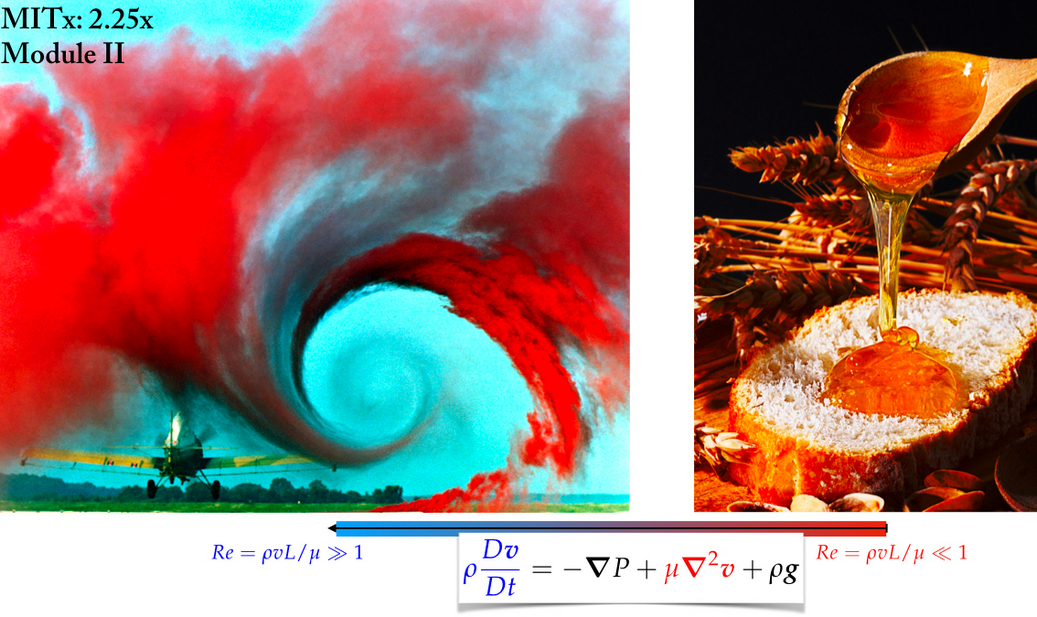In this graduate-level online course from the MIT Department of Mechanical Engineering, you will learn how to use the Navier-Stokes equations and techniques like dimensional analysis to understand complex fluid mechanics problems.
The second in a three-course sequence covering incompressible fluid mechanics, this course focuses on viscous flows. It covers the following topics: pipe flows, channel flows and free surface flows, dynamical similarity and dimensional analysis, Stokes flows, similarity solutions and transient responses, lubrication analysis, and surface tension.
Based on material from 2.25 Advanced Fluid Mechanics – one of the most popular first-year graduate classes in MIT’s Mechanical Engineering Department – this series consists of the following three modules:
- Advanced Fluid Mechanics 1: Fundamentals
- Advanced Fluid Mechanics 2: The Navier-Stokes Equations for Viscous Flows
- Advanced Fluid Mechanics 3: Potential Flows, Lift, Circulation & Boundary Layers
Through lecture and demo videos, lecture concept checks, practice problems, and extensive problem sets, this series is designed to help you gain the ability to apply the governing equations, the principles of dimensional analysis, and scaling theory to develop physically-based, approximate models of complex fluid physics phenomena.
Learners who complete these three consecutive courses will be able to apply their knowledge to analyze and break down complex problems they may encounter in industrial and academic research settings.
The material is of relevance to engineers and scientists across a wide range of mechanical, chemical and process industries who must understand, analyze and optimize flow processes and fluids handling problems. Applications are drawn from hydraulics, aero and hydrodynamics, as well as the chemical process industries.





